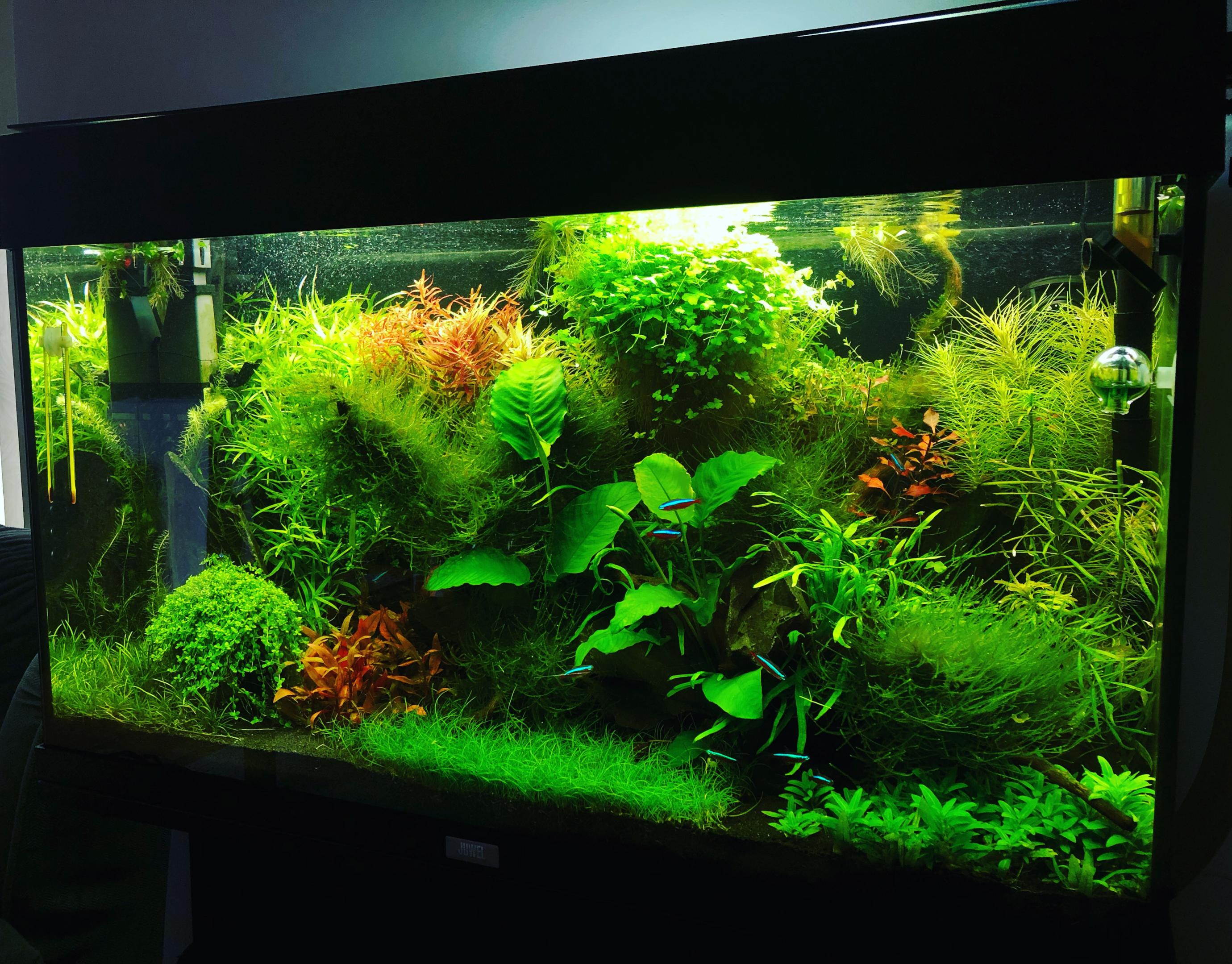Water change in the aquarium
How often shall we change the tank water? This is a question that is similar to the question about watering the plants. How often, how much and when shall we water our potted plants? Well, it all depends. It depends on the fish tank volume, a filter efficiency, fish and plants that are in our aquarium and other conditions that will be considered in this article below.
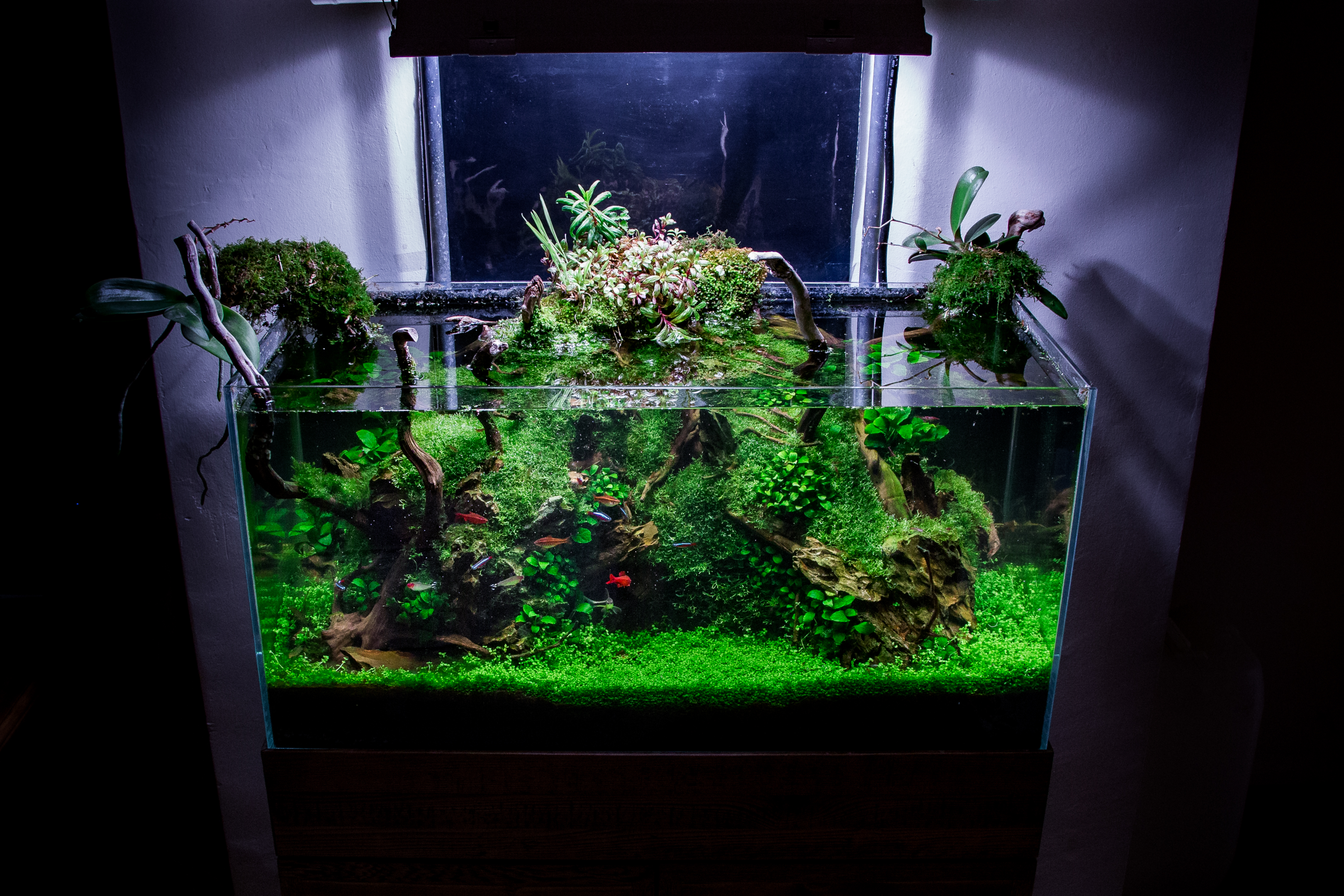
A common mistake
Changing aquarium water is the most basic treatment. However, most of beginner fish keepers, do not get the point of how important the regular maintenance is and how to do it properly. When we first think about it, that's nothing hard. We pour the dirty tank water out and we replace it by the tap water. For God's sake! When it is combined with flushing the substrate and water filter, you should expect an instant death of your livestock. It is a huge mistake and can cause irreversible consequences.
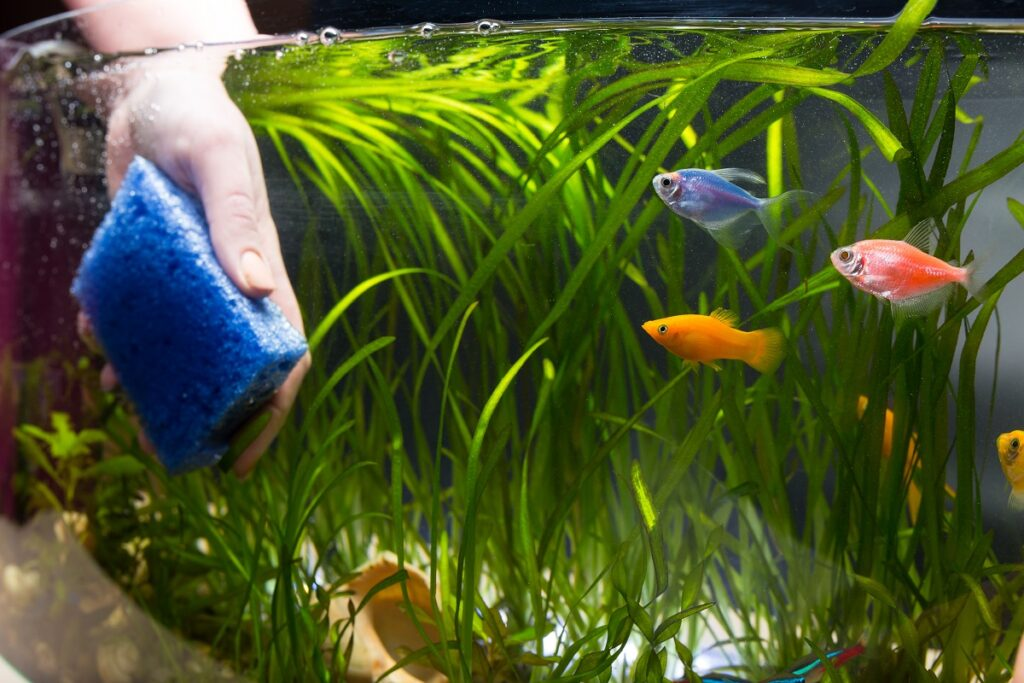
Why shall we change the water?
Some people would say that this is a cliche- to keep the tank clean, but there are many more things that are not visible at first sight. Understanding the basics of the nitrogen cycle is crucial. If you want to read more about the nitrogen cycle, visit our site here.
In general the more fish waste, uneaten food and other organic waste, the dirtier the water is. All these organic compounds produce ammonia. And when ammonia levels are too high, these can be lethal to our livestock.
We may reduce the risk by regular water changes. By doing partial water change, we dilute the concentration of harmful chemicals in our tank water.
How often shall I perform the water change?
Generally, you should change from 20% to 30% of your tank water not more often than once a week. But, there are some situations that can be imagined, if the aquarium is a little bit overstocked or too small, you will probably perform a water change more often than that. This should be dependent on your weekly water consumption too. If it evaporates really fast, it should be adapted accordingly. However, performing routine water changes is not equal to compensating the water that has evaporated. It is not a substitute.
On the other side, if you haven't got many fish in your freshwater tank, you should do it less frequently. When you observe your freshwater aquarium, it should be easily noticed if it requires more or less of our care.

Where do we take the clean water from?
Is the tap water a good idea? Most of fish keepers gets the tap water and let it stay for about 24 hours for all the chemicals, especially chlorine to evaporate. By the way, the water temperature rises so it won't be much different from the aquarium water. You may also set the water heater until the temperature matches the tank's water.
But sometimes people have larger tanks that are impossible to regularly change the water and gather 5 or even 10 buckets so you may use the tap water conditioner. It neutralizes chlorine and other harmful chemicals that could damage fish gills or eyes. Remember to do it gradually to avoid a large drop in tank's temperature. Too much cold water added changes the water temperature and not every fish species are that adaptable.
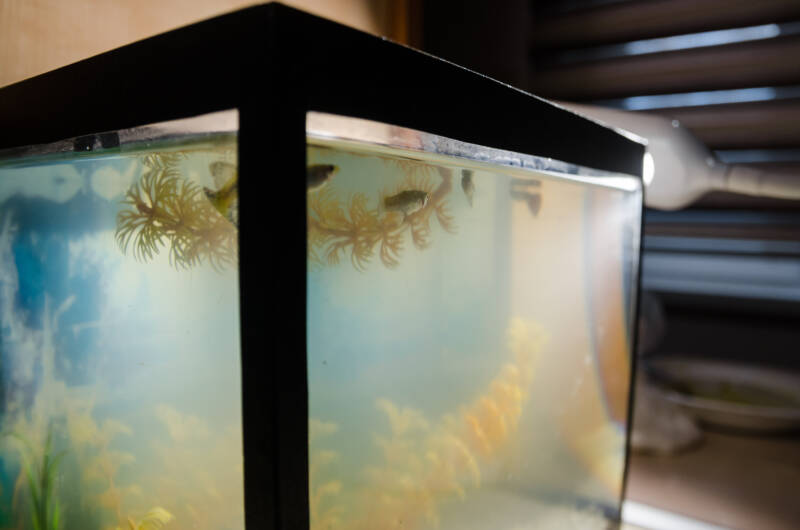
Is performing water change enough to keep the tank clean?
Except the water change, an important thing to do is to clean the aquarium properly- remove algae, trim plants etc.
There is no need to take the fish out of a tank water because you won't drain the aquarium completely. Probably, catching them is more stressful for them than slowly cleaning around them.
What equipment is needed?
To change the aquarium water, a few things will simplify this process. Products that will be helpful during the cleaning are:
-
Algae scraper
-
Filter media
-
Sponge
-
Towel
-
Scissors
-
Gravel vacuum also known as a gravel siphon
-
Testing kit
How to do it?
First of all, it is not recommended to clean the filter media, change the water and vacuum the gravel at once. Both the filter and gravel substrate are home for beneficial bacteria that keep fish tank water a cleaner space. They are responsible for the proper functioning of the nitrogen cycle. Instead of that, clean the filter or vacuum the gravel a few days before or after changing the water to have healthy fish without any diseases.
One of the most important things is to turn off the equipment before removing any water. Aquarium heaters and filters can't work without water and as a result they can be damaged while running in dry air. These are things that should be done around the aquarium:
-
Test your water quality
Even besides the deep cleaning, you should always check your ammonia, nitrites and nitrates levels. These water parameters are crucial while talking about freshwater tanks. Poor water quality can cause some serious repercussions. You should keep the first two about 0 ppm (particle per million) and nitrates below 40 ppm.
-
Remove debris and algae
Scrub the tank walls, the tank lid, decorations, rocks with an algae scrape and remove debris that can accumulate in the bottom of the aquarium or float on the surface. To clean stubborn dirt and fragile ornaments you must not use any soap or detergents. Even a chemical trace elements can be dangerous for your fish. Instead of that try to scrub them in warm water.
The sponge will be useful to wipe the glass walls from the outside and inside.
If your tank consists of live plants, spend this time to remove dead leaves and trim the overgrown plants with scissors.
-
Vacuum the tank's substrate
Firstly, try to move as many aquarium ornaments 0as possible because waste accumulates underneath them. Then you use your gravel siphon and vacuum the substrate. It removes not only fish waste, leftover food and rotting plants but also old tank water and the excess nitrates within the siphon water. It is a great idea to connect vacuuming with the water change.
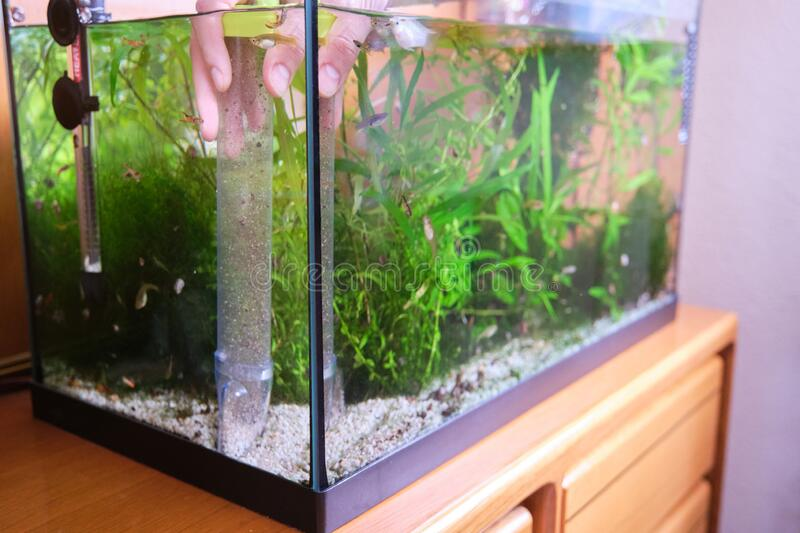
-
Clean the filter media
You should clean the filter at least once a month. It collects debris and all the organic waste from the entire fish tank. The very thing to remember is to wash it in the bucket of recently removed tank water. And why is that? If we clean it under the tap water, all the beneficial bacteria probably are going to be washed out. We want our good bacteria still to work as the biological filter.
-
Refill the water
After doing all this, you can finally refill the tank with fresh water. Just watch the water level, how much you have used and add the missing part but do not overdo it. We don't want our pH level to change.
-
Turn on the devices
You have forgot about something, haven't you? Remember to plug your equipment in to finish the process.
At this moment, you are probably thinking that something has been done wrongly. Your tank's water looks dirtier that it was before the cleaning. Everything is moving and clouding up the water. Do not worry, if you turn your filter media again and wait for about an hour the waste will settle down or get sucked up by the filter.
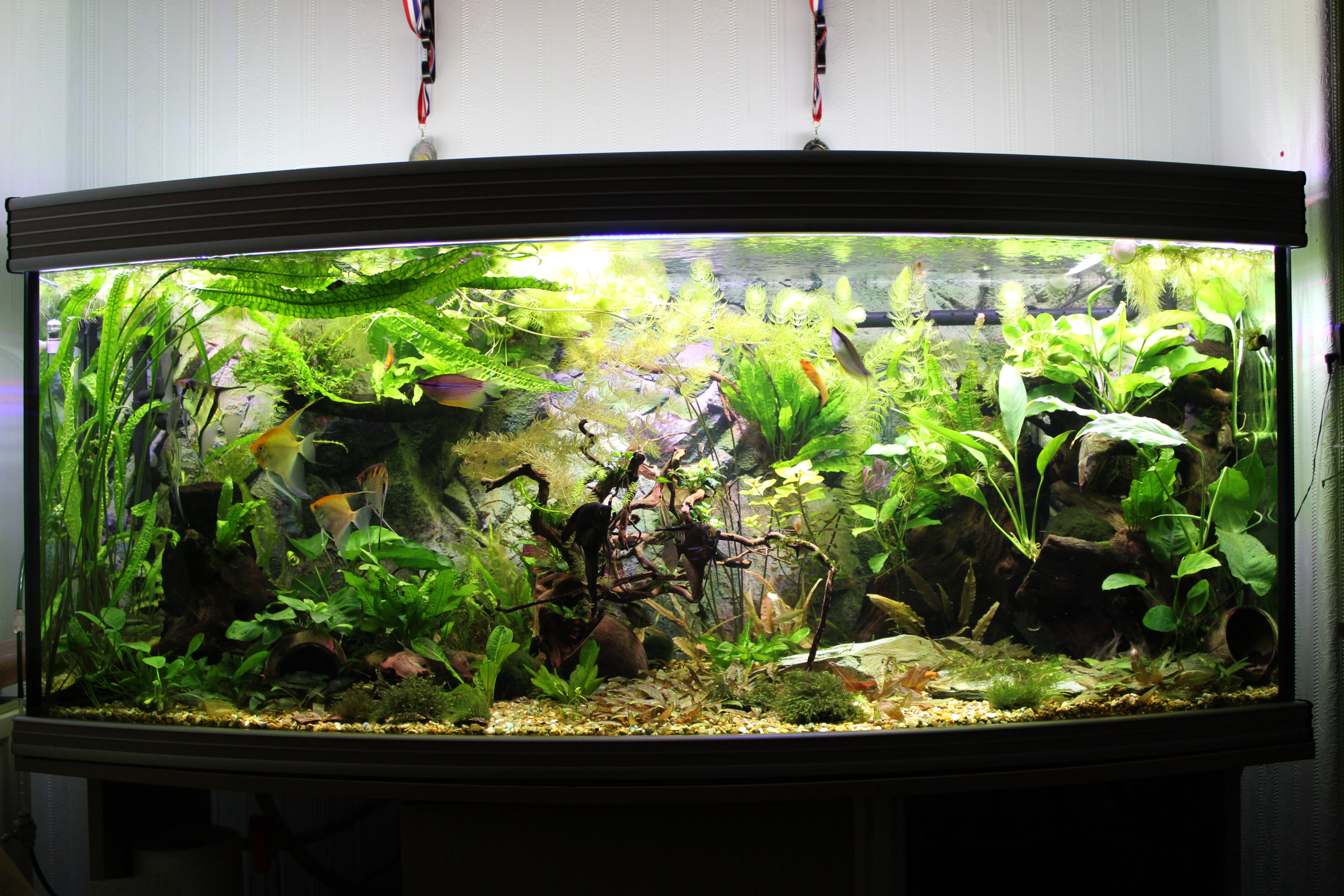
Summary
We empty the bin, vacuum our flat, wipe off the dust and the same thing should happen to our fish tank. If we stick to the schedule that has to be done our freshwater tanks will be a clean and safe place to live and keep our fish healthy.
There is nothing hard about cleaning the fish tank. Having done it once, you won't need any instructions anymore. As it was said that is nothing hard but totally worthy and needed. Any decorations, live plants or even the most colorful fish can't look nice or feel well in the dirty water.
